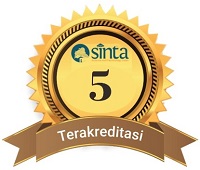TOWARD IMPROVEMENT OF VO2Max BOXING SHADOW BOXING
Abstract
The purpose of this study was to determine how much influence the Shadow Boxing exercise had on increasing VO2Max in boxing. The method used in this research is experiment. The design used is a One group Pre-test-post test design. The sample of this research was conducted on sixth semester students of Sport Coaching Education, amounting to seven students. Based on the results of the study, the average increase in maximum aerobic endurance capacity or VO2Max is before being given Shadow Boxing training by 24.3 and after being given Shadow Boxing training by 31.78. This proves that the Shadow Boxing exercise gives positive impact on VO2Max. hence, this exercise can be recommended to be added as a special portion of the exercise menu for boxers who have problems with poor aerobic capacity.
Keywords
Full Text:
PDFReferences
Ballesteros, J. M. (1993). Introduction Training in Athletics. Jakarta: PB. PASI.
Bompa, T. O. (1983). Theory and Methodology of Training. IOWA: Kendall Hunt Publishing Company.
Cooper, K. H. (1982). The Aerobics Program for Total Well Being. New York: Mc. Evans Co.
Davis, R. J., Bull, C.R., Roscoe, J.V., & Roscoe, D.A. (1995). Physical Education and Study of Sport. Barcelona: Grafos S.A.
Fox, E. L., Bowers, R. W., & Foss, M. L. (1993). The Physiological Basis for Exercise andSport, (5th Ed). Madison: WI. Brown and Benchmark.
Ghosh, A.K., Goswami, A., & Ahuja, A. (1995) Heart rate and blood lactate response in amateur competitive boxing. Indian Journal of Medical Research 102, 179-183.
Gyuton, C.A., & Hall, E.J. (2008). Fisiologi Kedokteran. Textbook of Medical Physiology. (11th Ed) Jakarta: EGC Medical Publisher.
Harsono. (1988). Coaching dan Aspek-Aspek Psikologis dalam Coaching. Jakarta: Depdikbud Dirjen Dikti P2LPTK.
Kaminsky, L. (2005). ACSM's Resource Manual For Guidelines For Exercise Testing and Prescription (5thEd.). Philadelphia: Lippincott Williams
Kusnanik, N. W., Nasution, J., & Hartono, S. (2011). Dasar-Dasar Fisiologi Olahraga. Surabaya: UNESA University Press.
Moniaga, F. (2004). Melatih Teknik Olahraga Tinju. Jakarta: PB PERTINA.
Nala, N. (1998). Pelatihan Fisik Olahraga. Denpasar: Udayana Press.
Nossek, J. (1982). Teori Umum Latihan. (Dr. A. Eleyae, Pengalih Bahasa) Lagos Pan Africa Press. Ltd.
Roesdiyanto & Budiwanto. (2008). Dasar- Dasar Kepelatihan Olahraga. Malang: Lab IKOR UNM.
Vittori, C. (1991). The Development and Training of Young 400 Meters Runners.Journal of New Studies in Athlectics. 6(1). 35-46.
Wilmore, H. J. (2005). Physiology of Sport and Exercise, (3rd Ed). Champaign, IL. Human Kinetics.
DOI: https://doi.org/10.37311/jjsc.v2i1.5628
Refbacks
- There are currently no refbacks.

Jambura Journal of Sports Coaching (p-ISSN: 2654-3435 | e-ISSN: 2656-0437) is licensed under a Creative Commons Attribution-ShareAlike 4.0 International License.
Jambura Journal of Sports Coaching has been indexed by:
-------------------------------------------------- -------------------------------------------------- -------------------------------------------------- -----------------------------
-------------------------------------------------- -------------------------------------------------- -------------------------------------------------- -----------------------------
BERKOLABORASI DENGAN
















_-_Copy.jpg)